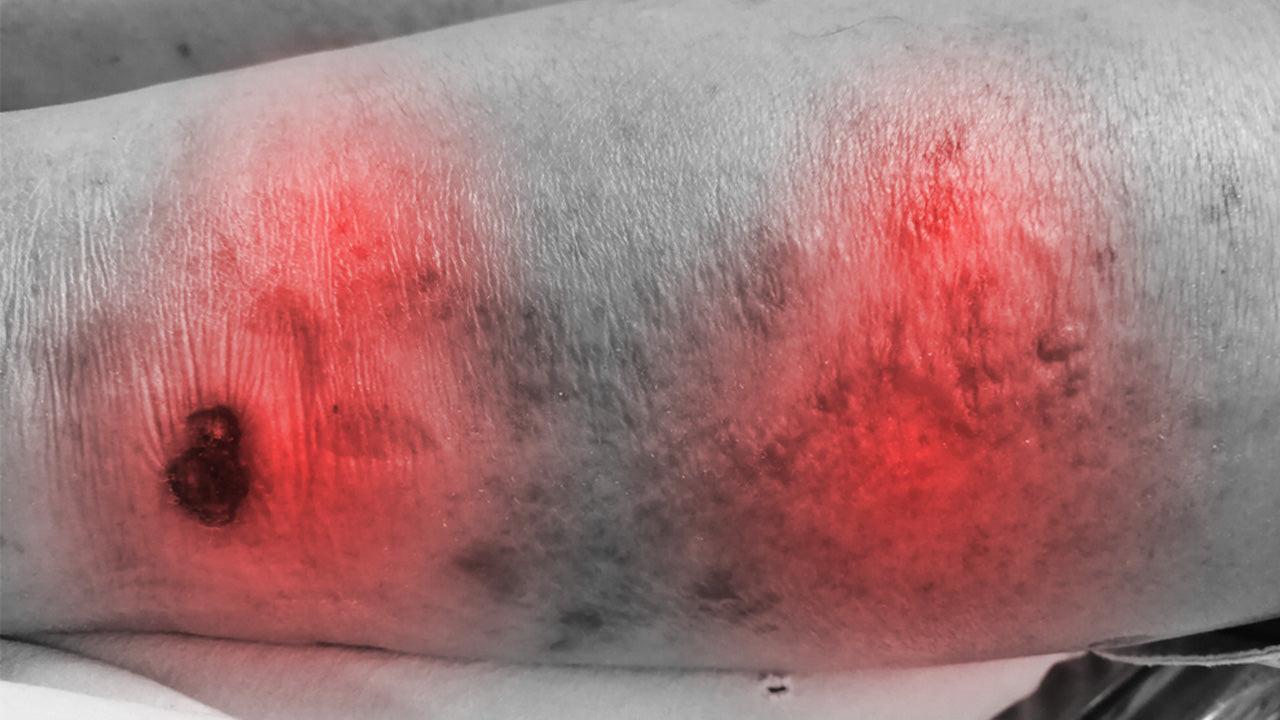Plasma Exchange Therapy (Plasmapheresis): What Is It and What Can It Help Treat?
 By: by Amino Science
By: by Amino Science

Plasmapheresis, or plasma exchange therapy, involves removing the blood's plasma via a blood withdrawal, cleaning it up, and transfusing it back. Similar in many ways to kidney dialysis, therapeutic plasma exchange can be used to treat certain autoimmune conditions by way of fluid replacement. We have the details on how this process works and which conditions it can help successfully treat.
What Is Plasma Exchange Therapy?
According to the American Society for Apheresis (ASFA), therapeutic plasma exchange (TPE) involves passing a patient's blood through an apheresis machine, removing the filtered plasma volume, and then reinfusing the red blood cells back in, along with replacement fluid like fresh frozen plasma or albumin.
While the terms apheresis, plasmapheresis, and plasma exchange (PE) are quite often used interchangeably, there are some distinctions in their definitions that we'll address first.
- Apheresis: This is a general term that describes the removal of blood from a patient, after which some portion of the blood is separated and retained by the doctor while the rest is returned to the donor. If you've ever donated plasma, you have interacted with an apheresis machine.
- Plasmapheresis: This process removes less than 15% of the donor's blood volume, which is an amount so small it does not need to be replaced with other fluids (much like when you make a whole blood donation and you do not need any replacement substances other than a juice box and a cookie).
- Plasma Exchange (PE): This therapeutic apheresis removes a large amount of plasma from the person's blood flow, so much so that if it is not replaced immediately, he or she might experience hypovolemia (a decreased volume of circulating blood) and vasomotor (blood pressure) or circulatory collapse. In this instance replacement fluid is necessary.
The plasma fluid of those sick with autoimmune disorders could be full of antibodies that are attacking the immune system. By separating the red cells from the rest of the liquid part of blood with a cell separator and centrifugation machine, a health care professional can help remove these antibodies, alleviate autoimmune symptoms, and possibly improve quality of life.
What Does Plasma Exchange Therapy Treat?
Certain forms of neuropathy (diseases of the nervous system) and some complications of sickle cell disease can be treated with therapeutic apheresis. Other conditions that have shown clinical improvement from plasma exchange therapy include:
- Guillain-Barre syndrome (GBS): Also known as acute inflammatory demyelinating polyneuropathy (AIDP), Guillain-Barre syndrome can cause weakness and paralysis of the limbs, and has shown strong evidence of treatment thanks to plasmapheresis in clinical practice, from severe to mild presentations of the condition. IV immunoglobulin (IVIg) is an alternative treatment for Guillain-Barre syndrome patients, with neither IVIg or plasma exchange therapy showing any superiority in clinical trials over the other.
- Chronic inflammatory demyelinating polyneuropathy (CIDP): This neurological disorder is characterized by impaired sensory functions as well as progressive weakness in the limbs. There is strong evidence that plasma exchange therapy is effective as a short-term treatment alongside immunosuppressants, steroids, and IVIg.
- Myasthenia gravis: This chronic autoimmune disease translates literally to "grave (serious) muscle weakness." It afflicts the skeletal muscles of the limbs and body, including those needed for breathing. While clinical results are mixed, plasma exchange treatment is nevertheless considered a treatment option.
- ANCA-associated rapidly progressive glomerulonephritis: This is inflammation of the tiny filters or glomeruli of the kidneys. Glomerulonephritis also plays a role in other autoimmune disorders like Goodpasture's syndrome and systemic lupus erythematosus, both of which can be helped with the use of therapeutic apheresis in clinical practice.
Each of these conditions involves antibodies in the plasma of the blood which, instead of attacking foreign invaders like viruses, target healthy cells with important functions. This is true in conditions like multiple sclerosis (MS) in which the immune cells attack the protective sheathing on nerve cells. In more recent years plasma exchange therapy is being studied in relation to conditions like thrombotic thrombocytopenic purpura (TTP), a blood disorder characterized by low platelet levels and dangerous blood clots, and Wilson's disease, a genetic disorder characterized by copper buildup in the body.
Plasmapheresis is also used as a first-line therapy in cases of hyperviscosity syndrome (too much viscosity in the blood) and cryoglobulinemia (the presence of abnormal proteins in the blood that can thicken in cold temperatures).

How Is Plasma Exchange Therapy Administered?
Plasma exchange therapy may be administered on either an in-patient or out-patient basis. The patient will rest on a bed or cot while a needle and catheter (the tube) are inserted in the best vein possible (if not in the arm then in the shoulder or possibly the groin). This is the outtake tube, whereas the reinfusion line will be inserted in the other arm or possibly the foot.
Those who are donating plasma may be done in as little as 90 minutes, while those receiving plasma exchange therapy may find the procedure takes as long as 4 hours up to 5 times per week depending on the state of their overall condition and any side effects or exacerbations which may arise.
How Should You Prepare for Plasmapheresis?
Rest assured that the process is relatively painless. Outside of the discomfort associated with needles and sitting still for a long period of time, the general recommendations for optimal comfort during this procedure include:
- Getting a good night's rest the day before.
- Drinking plenty of fluids well in advance (keep in mind that you can't get up to pee during this procedure).
- Eating a solid meal before this procedure to reduce the risk of becoming light-headed or fainting.
- Wearing comfortable clothing and bringing a blanket if you tend to get cold.
- Bringing a novel, electronic device, or book of puzzles to stay entertained during the duration.
Potential Risks of Plasma Exchange Therapy
Outside of the faintness, dizziness, and cold feelings most people know are associated with donating blood (and a drop in blood pressure), other risks of undergoing plasmapheresis include stomach cramps, blurred vision, and possible infection, blood clotting, or an allergic reaction.
If you worry about infection, talk with your doctor to make sure you're up on your vaccinations. You may be prescribed an anti-coagulant for blood clots, and if there is an allergic reaction to the solution your plasma is replaced with, health care professionals will be on hand to help you safely through it.
To accelerate recovery, supplement with Heal, a precisely formulated amino acid nutraceutical that can replenish your supply of plasma amino acids.

It's in Your Blood
Along with immunosuppression drugs, plasma exchange therapy can help treat and drastically improve certain autoimmune disorders by cleaning your blood. Talk to your doctor or another qualified health care professional about your treatment options and whether plasma exchange therapy could improve your condition.

Up to 25% off Amino
Shop NowTAGS: conditions
Join the Community
Comments (0)
Most Craveable Recipes




 833-264-6620
833-264-6620



















